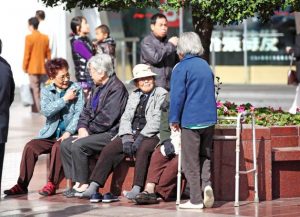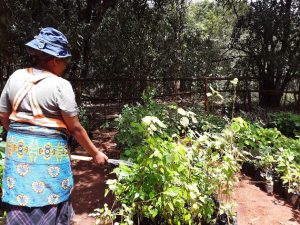LONDON and HOUSTON and SINGAPORE, March 27, 2023 (GLOBE NEWSWIRE) — Wood Mackenzie, a portfolio company of Veritas Capital, has appointed Simon Crowe to its global executive leadership team as Chief Financial Officer (CFO), effective 27th March.
Simon brings a wealth of experience in private and public companies in the US, Europe and Asia. He joins Wood Mackenzie after nearly five years as CFO of ERM, the world's largest Sustainability and Environmental Consultancy where he played a key role in their rapid growth, diversification, and successful investment from KKR.
Commenting on Simon's appointment, Mark Brinin, CEO of Wood Mackenzie said: "Simon is a commercially minded CFO, with a breadth of international experience, having worked with private equity backed ERM and companies listed on New York, London and European stock exchanges. He has strong financial management and strategic leadership skills. Simon's diverse background in environmental consulting and global energy markets brings deep knowledge of our end markets. His considerable experience will benefit the future success of Wood Mackenzie. We are delighted that he has chosen to join us."
"He is well qualified to help the team build on its decades of leadership and innovation in the energy industry. It is an exciting time to join Wood Mackenzie as the company is well positioned to expand and enhance the critical insights provided to its growing customer base across the entire energy and renewables value chain," Brinin added.
Simon Crowe, CFO, commented: "I am really excited about joining the Wood Mackenzie team. The global energy, renewables and commodity markets are in transition to net zero and Wood Mackenzie has a new strategic partner in Veritas Capital. The world will be increasingly reliant on the critical insights, data and knowledge that Wood Mackenzie's research and consulting teams have developed over the last 50 years. I am looking forward to working with a first–class global team and helping to drive the growth agenda."
EDITOR'S NOTES
View the full Wood Mackenzie executive leadership team here.
Read the press release announcing Veritas Capital's acquisition of Wood Mackenzie in February here.
For further information please contact Wood Mackenzie's media relations team:
Sonia Kerr
+44 330 174 7267
Sonia.kerr@woodmac.com
You have received this news release from Wood Mackenzie because of the details we hold about you. If the information we have is incorrect you can either provide your updated preferences by contacting our media relations team. If you do not wish to receive this type of email in the future, please reply with 'unsubscribe' in the subject header.
About Wood Mackenzie
Wood Mackenzie is a trusted source of commercial intelligence for the world's natural resources sector. We empower customers to make better strategic decisions, providing objective analysis and advice on assets, companies and markets. For more information, visit: www.woodmac.com or follow us on Twitter @WoodMackenzie
WOOD MACKENZIE is a trademark of Wood Mackenzie Limited and is the subject of trademark registrations and/or applications in the European Community, the USA, and other countries around the world."
About Veritas Capital
Veritas is a longstanding technology investor with over $40 billion of assets under management and a focus on companies operating at the intersection of technology and government. The firm invests in companies that provide critical products, software, and services, primarily technology and technology–enabled solutions, to government and commercial customers worldwide. Veritas seeks to create value by strategically transforming the companies in which it invests through organic and inorganic means. Leveraging technology to make a positive impact across vitally important areas, such as healthcare, education, and national security, is core to the firm. Veritas is a proud steward of national assets, improving the quality of healthcare while reducing cost, advancing our educational system, and protecting our nation and allies. For more information, visit www.veritascapital.com.
A photo accompanying this announcement is available at https://www.globenewswire.com/NewsRoom/AttachmentNg/dc6a85fd–6cd6–4b57–b37d–ca7c25a9ea5b

GLOBENEWSWIRE (Distribution ID 1000800450)











